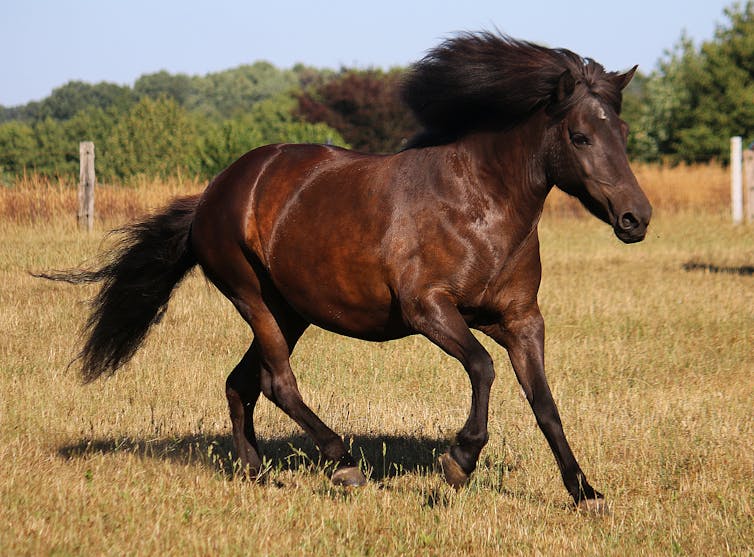5 ways to teach the link between grammar and imagination for better creative writing
- Written by Brett Healey, PhD Student, School of Education, Curtin University
Fiction authors are pretty good at writing sentences with striking images, worded just the right way.
We might suppose the images are striking because the author has a striking imagination. But the words seem just right because the author also has a large repertoire of grammar.
Read more: Writing needs to be taught and practised. Australian schools are dropping the focus too early[1]
As writing teachers, we often neglect one of these skills in favour of the other. If we inspire students to write creatively at length[2] but don’t teach them how to use the necessary grammatical structures[3], they struggle to phrase their ideas well. If we teach students about grammar in isolation, they tend not to apply it to their stories[4].
But research shows[5] it’s possible to teach grammar as a way to strengthen students’ writing.
My research with year 5 students examined one method of teaching grammar for writing. We can teach students how to imagine the scene they are creating, and then teach them which grammatical features help turn their imagination into text[6].
Read more: 4 ways to teach you're (sic) kids about grammar so they actually care[7]
I found five effective ways to teach the link between imagination and grammar.
1. Set up the imaginative tripod
Most of the stories students brought to me lacked a clear sense of perspective. I taught students to imagine their scene like a film director – they had to decide exactly where their camera tripod should be set up to film their scene. Placing it above, close, far away from or beside the character creates different images and effects.
 Just like a movie director decides the position of their camera to film a scene, students’ language choices create a perspective to tell their story.
Shutterstock[8]
Just like a movie director decides the position of their camera to film a scene, students’ language choices create a perspective to tell their story.
Shutterstock[8]
Then I showed them how careful use of adverbs, verbs and prepositions creates this perspective in writing.
This is done in Philip Pullman’s novel, Northern Lights[9], to place you right beside the character in the room.
“The only light in here came from the fireplace”
Read more: Why does grammar matter?[10]
2. Zoom in on the details
Young writers often need help adding detail to their stories. A film director might zoom right in on a character’s hand pulling the trigger on a gun to intensify the action of shooting. A writer does the same. I taught students to imagine significant details up close, which helped them select specific nouns to place in the subject position of the sentence.
In Aquila[11], by Andrew Norriss, specific nouns of body parts are the actors in the sentence.
“As his feet searched for a foothold, his fingers gripped the grass.”
3. Track the movement
It is common for students to write about movement in rather static terms, such as “she ran home”. In a film, a director might choose to follow the movement by panning the camera, using a dolly, or filming multiple shots to allow us to experience the full path of movement.
I taught students to imagine watching the movement in their stories through a series of windows – first, second, third – and choose which parts they wanted to include. This helped them choose which verbs and prepositional phrases to use.
In The Fellowship of the Ring[12], by J.R.R. Tolkien, we watch Bill the pony galloping off through three windows, each with a prepositional phrase.
“Bill the pony gave a wild neigh of fear, and turned tail and dashed away along the lakeside into the darkness.”
 Verbs and prepositions convey the movement that brings a sentence to life.
Shutterstock[13]
Verbs and prepositions convey the movement that brings a sentence to life.
Shutterstock[13]
I also taught students to describe how much space an object takes up using the same movement grammar, such as stretched along and rose from.
In The Graveyard Book[14], by Neil Gaiman, we pan across the perimeter of the cemetery.
“Spike-topped iron railings ran around part of the cemetery, a high brick wall around the rest of it.”
4. Focus the attention
When we read a novel, there is always something standing out in our attention: a thing, a description, a feeling, an action. I taught students to think about which part of their scene stands out in their mind, and then use “attention-seeking” grammar to focus on it.
Read more: To succeed in an AI world, students must learn the human traits of writing[15]
One way to make things stand out is to use grammar that deviates from conventional use, like placing adjectives after nouns. Another way is to use repeated grammatical structures.
In Tolkien’s The Return of the King[16] we get both of these at the same time to contrast the physical states of the orc and Sam.
“But the orc was in its own haunts, nimble and well-fed. Sam was a stranger, hungry and weary.”
5. Convey the energy of action
Many of the students wanted to create action scenes in their stories, which they did using the previous strategies. However, they lacked the energy felt in an action-packed novel. I showed them a sentence like this one from The Blackthorn Key[17] by Kevin Sands.
“A musket ball tore at my hair as it punched into the window frame behind me, sending out a shower of splinters.”
The students could see how energy transfers across the clauses, like dominoes, from noun to noun. In this case, the energy starts with the musket ball, and transfers to hair, window frame and finally the shower of splinters, carried by the action verbs.
I asked the students to imagine how a chain of action might appear in their stories and select the appropriate nouns and verbs to do the job.
References
- ^ Writing needs to be taught and practised. Australian schools are dropping the focus too early (theconversation.com)
- ^ write creatively at length (www.forbes.com)
- ^ necessary grammatical structures (theconversation.com)
- ^ they tend not to apply it to their stories (www.researchgate.net)
- ^ research shows (www.tandfonline.com)
- ^ turn their imagination into text (onlinelibrary.wiley.com)
- ^ 4 ways to teach you're (sic) kids about grammar so they actually care (theconversation.com)
- ^ Shutterstock (www.shutterstock.com)
- ^ Northern Lights (books.google.com.au)
- ^ Why does grammar matter? (theconversation.com)
- ^ Aquila (www.google.com.au)
- ^ The Fellowship of the Ring (www.google.com.au)
- ^ Shutterstock (www.shutterstock.com)
- ^ The Graveyard Book (readfreeonlinenovel.com)
- ^ To succeed in an AI world, students must learn the human traits of writing (theconversation.com)
- ^ The Return of the King (thefreebooksonline.net)
- ^ The Blackthorn Key (booksvooks.com)

















